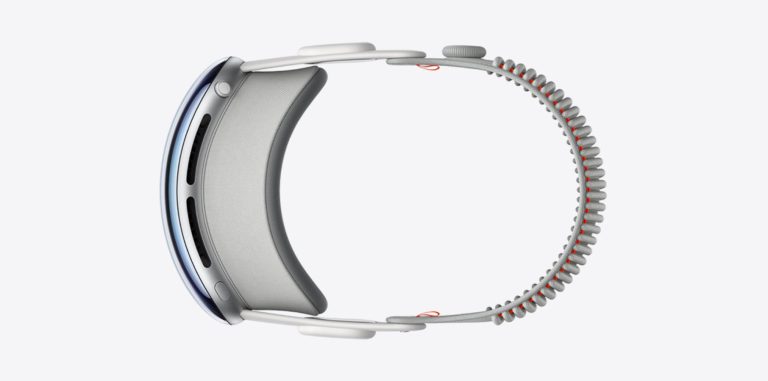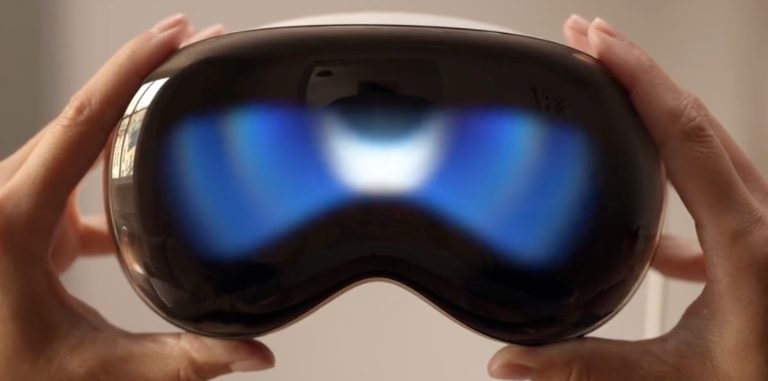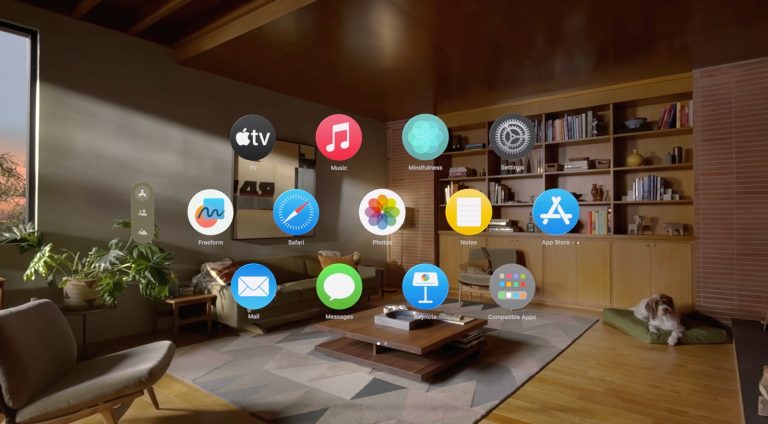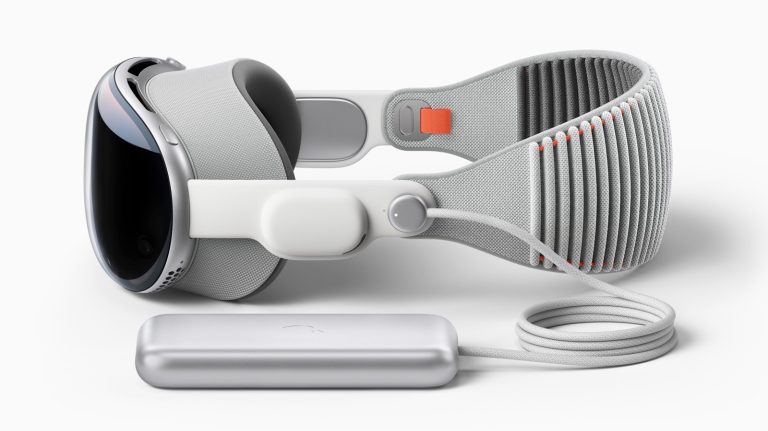Announced at WWDC 2023, Apple Vision Pro is the company’s first spatial computer. Here’s everything you need to know about Apple’s headset: its price, features, and the new operating system, visionOS.
When will Apple release Vision Pro?
Apple Vision Pro was released on February 2nd in the US. It’s available online and at physical stores. Pre-orders started on January 19 at 5 a.m. PST.
Global expansion
According to analyst Ming-Chi Kuo, Apple wants to release Vision Pro outside the US before WWDC 2024. Although the global expansion might take longer, it’s possible that countries like Canada, the UK, and Germany get the spatial computer in the coming months.
It all depends on US demand, Apple’s capacity to produce more units, and the sales process at physical Apple Stores.
Apple also says it expects to launch this product in more countries later this year. More recently, the company started posting jobs related to this product in several countries, such as Australia, Canada, and the UK.
Can international customers buy Vision Pro?
They can, but they shouldn’t. Apple says this spatial computer only works with a US ID with a region set to the US. Here’s what Apple tells us:
- It only supports English (U.S.) for language and typing and English for Siri and Dictation.
- App Store requires an Apple ID with a region set to the U.S.
- Purchases on Apple Music and TV app require an Apple ID with the region set to the U.S.
- For customers with vision correction needs, ZEISS will only accept vision prescriptions written by U.S. eye care professionals and will only ship to U.S. locations.
- Customers may not be able to access certain apps, features, or content due to licensing or other restrictions in those countries or regions.
- Apple Support is only available in the U.S.
How much does it cost?

Apple Vision Pro has a starting price of $3,499 with 256GB of storage and the M2 chip. Here are the other price points:
- 512GB: $3,699
- 1TB: $3,899
Apple has also partnered with Zeiss to offer prescription lenses to users. There will be Readers and Prescription options for $99 and $149, respectively.
A fully loaded Vision Pro will cost you around $5,000.
AppleCare+ price
Apple charges $499 for two years of AppleCare+ warranty.
What comes in the box?

Apple has revealed what comes in the Apple Vision Pro box:
- A Solo Knit Band and Dual Loop Band — giving users two options for the fit that works best for them
- Light Seal
- Two Light Seal Cushions
- An Apple Vision Pro Cover for the front of the device
- Polishing Cloth
- Battery
- USB-C Charge Cable
- USB-C Power Adapter
Design

Apple Vision Pro has a premium look by adding an aluminum frame and a high-end mesh for the head, close to what the AirPods Max offers. The design goal of Vision Pro is not to be isolated but to interact with others. The EyeSight shows your eyes and expressions through the outer display.
Unlike other headsets, the enclosure is made of a singular piece of three-dimensional laminated glass that flows into an aluminum alloy frame that curves to wrap around the user’s face. The Light Seal flexes to conform to the user’s face, delivering a precise fit while blocking out stray light.
The Headband provides cushioning, breathability, and stretch. The Fit Dial lets users adjust Apple Vision Pro precisely to their head.
The device has two 4K micro OLED displays with 23 million pixels combined with over a dozen cameras, and it features a Digital Crown that the users can spin to switch between VR and AR modes.
Processor, sensors, and cameras

Apple’s spatial computer uses the company M2 processor, which Apple says “simultaneously runs visionOS, executes advanced computer vision algorithms, and delivers stunning graphics, all with incredible efficiency,” while the new R1 chip is specifically dedicated to processing input from the cameras, sensor, and microphones, streaming images to the displays within 12 milliseconds for a virtually lag-free, real-time view of the world.
Apple Vision Pro includes 12 cameras and five sensors that are responsible for monitoring hand gestures, mapping the external environment, and recording spatial videos or taking photos.
Apple says two cameras transmit real-world images using AR mode, while the others work for head and hand tracking and real-time 3D mapping. The company even added infrared flood illuminators to help hand tracking in low-light conditions. Like iPhones and iPads, Apple also included LiDAR depth sensors as well.
visionOS and features

Since this is the first time Apple has announced a new operating system in years, many of its features are part of the foundation of visionOS, the system that powers this spatial computer, such as:
- Optic ID: Apple unveiled a new unlocking method with Vision Pro. Optic ID scans your iris, which Apple says is even more accurate and mistake-proof than Face ID. IPhones with Face ID sensors can sometimes be unlocked if the user has an identical twin.
- Cinema Environment: Enjoy shows and movies at the frame rate and aspect ratio the filmmaker intended with immersive Spatial Audio. It’s possible to create a screen that feels 100 feet wide to watch Apple TV Plus, other streaming services, or even play 100 Apple Arcade games.
- FaceTime video: Calls are life-size, and as new people join, the call simply expands in your room with visionOS. Within FaceTime, you can use apps to collaborate with colleagues on the same documents simultaneously. When you’re talking, there will be a Persona in your place, here’s how it’s going to work.
- Accessibility: Apple Vision Pro will offer accessibility features similar to what it already brings with Apple Watch and other devices with Pointer Control, Dwell Control, Guided Access, and VoiceOver.
- Gestures: There are six different gestures to control the spatial computer device. Users can tap, double tap, pinch and hold, pinch and drag, zoom, and rotate. The last two gestures require two hands. You can also select items by looking at them or asking Siri.
BGR has a complete guide about visionOS, including how to test the beta, release date, and more. Once users get this device, they need to download the latest operating system update.
Apple apps available at launch
Apple Vision Pro comes with the following pre-installed apps:
- App Store
- Encounter Dinosaurs
- Files
- Freeform
- Keynote
- messages
- Mindfulness
- Music
- Notes
- Photos
- Safari
- Settings
- Tips
- TV
- Books
- Calendar
- Home
- Maps
- News
- Podcasts
- Reminders
- Shortcuts
- Stocks
- Voice Memos
Apple Vision Pro pillars
This spatial computer relies on three big areas: Productivity, Entertainment, and Gaming. Here’s how Apple describes each of them:
- An infinite canvas for productivity: With productivity and collaboration apps like Fantastical, Freeform, JigSpace, apps from Microsoft 365, and Slack, Apple Vision Pro is a productivity tool for everyday tasks. Apps can appear side by side at any scale for incredible multitasking, and with support for Magic Keyboard and Magic Trackpad, users can create the perfect workspace. With Mac Virtual Display, users can even bring the powerful capabilities of their Mac into Vision Pro, creating an enormous, private, and portable 4K display, ideal for pro workflows.
- The ultimate entertainment experience: Apple Vision Pro features ultra-high-resolution displays that deliver more pixels than a 4K TV for each eye, enabling users to watch movies and TV shows from Apple TV+, Disney+, Max, and other services on a screen that feels 100 feet wide with support for HDR content. Within the Apple TV app, users can access more than 150 3D titles with depth wherever they are. Vision Pro also introduces Apple Immersive Video, a new entertainment format pioneered by Apple that puts users inside the action with 180-degree, three-dimensional 8K recordings captured with Spatial Audio. Users can also enjoy new interactive experiences like Encounter Dinosaurs.
- New gaming experiences: Players can access games on the App Store, including more than 250 titles on Apple Arcade. Hit games like NBA 2K24 Arcade Edition and Sonic Dream Team can be played on a screen as large as they want with incredible audio and support for popular game controllers. New spatial games, including Game Room, What the Golf?, and Super Fruit Ninja, take advantage of the capabilities of Apple Vision Pro to transform the space around players, offering unique and engaging gameplay experiences.
Best streaming apps

Several streaming services will be available for Apple Vision Pro, but users should look for these three for the best experience possible:
- Apple TV app: Apple’s own solution, the TV app, offers Apple TV+ content and movies from the iTunes Store. With Apple TV+, users can watch immersive films, series, and sports at no additional cost, while the iTunes Store offers up to 150 3D movies.
- Disney+: Disney, for example, will offer 3D movies and Disney+ environments, making this one of the best streaming apps for Apple Vision Pro. In addition, with Disney+ environments, you’ll be able to watch your favorite movies and shows with environments that include animations and sounds from the franchises you love, such as Pixar, Star Wars, and Marvel.
- Max: Transform your space using the Iron Throne Room environment for an immersive experience that brings viewers into the iconic Red Keep.
In addition, users can download and stream some other favorite streaming apps, such as ESPN, MLB, PGA Tour, Discovery+, Amazon Prime Video, Paramount+, Peacock, Pluto TV, Tubi, Fubo, Crunchyroll, Red Bull TV, IMAX, TikTok, and the 2023 App Store Award-winning MUBI.
You should download these apps once you get this device

BGR selected 13 visionOS apps you should download as soon as you start using Vision Pro, including:
- Navi: This AI-based app adds subtitles and live translations to the real world. Once you start talking to someone speaking another language, subtitles will appear near them.
- Super Fruit Ninja: Chopping fruit in real life has never been this fun or immersive.
- The Archive: Explore immersive locations, artifacts, and spatial media from the mythology of Star Trek’s Gene Roddenberry and other creators.
- Voyager: The app gives spatial context to the coordinated nature of air traffic control, creating the ultimate playground for aviation enthusiasts.
- CARROT Weather: The popular weather app uses 3D weather maps to deliver hilariously twisted forecasts.
Best accessories
Whether you’re just curious about what you can do with it or what you might need to get the most out of this spatial computer, BGR lists some of the accessories you might need when Apple Vision Pro launches.
- Magic Keyboard: If you plan to work with the Apple Vision Pro, the first accessory you’ll need is the Magic Keyboard. Bloomberg‘s Mark Gurman writes that the virtual keyboard of this spatial computer is a “complete write-off,” and users have to “poke each key one finger at a time,” so you’ll probably need something better to type than this virtual keyboard.
- Apple Vision Pro Travel case: Designed by Apple to protect your Apple Vision Pro when you’re on the go. The Travel Case has a retractable handle and specially designed compartments for your battery, ZEISS Optical Inserts, Apple Vision Pro Cover, and additional accessories. It costs $199.
- Magic Trackpad: You might also need the Magic Trackpad for better precision while working. This accessory will help you type a document, select a part of a text, etc.
- Belkin Battery Holder: Designed to keep your Apple Vision Pro Battery safe and secure, the Battery Holder allows for a convenient and versatile hands-free experience. The Battery Holder offers a quick and easy way to clip the battery onto a belt or waistband, while the cross-body strap gives those without clip access a great way to be hands-free while experiencing Apple Vision Pro.
- AirPods Pro 2 with USB-C: Lastly, AirPods Pro 2 with USB-C is also at the top of the list if you want to take full advantage of Apple Vision Pro. Thanks to a new codec, these earbuds can stream lossless audio via Bluetooth. If you want the best audio experience on this spatial computer, you need Apple’s latest AirPods model.
You can discover more accessories for Apple Vision Pro here.
Replacement accessories

Although Apple includes everything you need in the box, you can always buy a replacement accessory, such as:
- Apple Vision Pro Battery: $199
- Light Seal: $199
- Light Seal Cushion: $29
- Solo Knit Band: $99
- Dual Loop Band: $99
- 240W USB-C Charge Cable (2m): $29
- 30W USB-C Power Adapter: $39
You can find them at Apple’s online store.
Battery

Apple Vision Pro doesn’t have a built-in battery. Not only do you have to wear the external battery at all times, but it was discovered that it has a hidden plug that reveals a Lightning port. Apple claims this essential accessory can least for up to 2.5 hours, but some reviewers were able to get something between two to four hours with this device on.
You can also buy an additional battery pack for $199. This device can be used while charging the battery as well.
Hands-on
Before the release of Apple Vision Pro, a few journalists had the chance to, once again, do a hands-on with Apple’s spatial computer.
The Verge’s Victoria Song talked about how similar the Apple Vision Pro felt to her, even though it was her first time trying this device:
“But my half-hour with it revealed that Apple’s headset felt more familiar than I thought it would. The iPhone face scan to select the correct light seal is very similar to setting up Face ID. Slipping it onto your head isn’t that different from any number of other VR headsets.”
Interestingly, Engadget’s Cherlynn Low talked about how she needed to switch straps due to some discomfort. Unlike Victoria, Low needed the strap that crossed her head for more comfort.
“The Vision Pro unit I tried on today came with a strap that you stretch and ends up at the back of your head. It was wide, ridged, and soft, and I at first thought it would be very comfortable. But 15 minutes into my experience, I started to feel weighed down by the device, and five more minutes later, I was in pain. To be fair, I should have flagged my discomfort to Apple earlier, and alternative straps were available for me to swap out. But I wanted to avoid wasting time. When I finally told the company’s staff about my issues, they changed the strap to one that had two loops, with one that went over the top of my head.”
Should you buy an Apple Vision Pro?
Since this is a first-gen product, there are several reasons not to buy an Apple Vision Pro right now, such as it is too heavy, spatial recording isn’t the best, and the device still lacking several apps.
On the other hand, this spatial computer has the best eye-tracking in the market, beautiful displays, and doesn’t require a controller. BGR listed six reasons to buy this spatial computer.
At the end of the day, it’s all about if you want to spend $3,500 for this device or if you’d rather wait for the next generation. Reports believe Apple sold in the pre-order period up to 200,000 units of this product.
Apple Vision Pro 2 rumors
Believe it or not, there are already a few rumors regarding Apple Vision Pro 2. According to Omdia research revealed by the Korean version of The Elec, Apple plans to offer this second generation with brighter, more efficient displays.
By 2027, Apple will upgrade the Vision Pro to an RGB OLEDoS display, which will be an improvement over the expected WOLED with a color filter that will be available with the first generation of this product.
The Elec explains that WOLED is a method that produces color as white light passes through an RGB color filter. On the other hand, RGB OLEDoS is a method that implements both light and color in RGB subpixels deposited adjacent to the same layer.
Besides Omdia, analyst Ming-Chi Kuo predicted that Apple might wait until 2027 to launch a second generation of this product. A cheaper version was expected by 2025, but it’s unclear if the company plans to release a variant of the first model that soon.
Tim Cook also weighted on Apple Vision Pro’s future.
